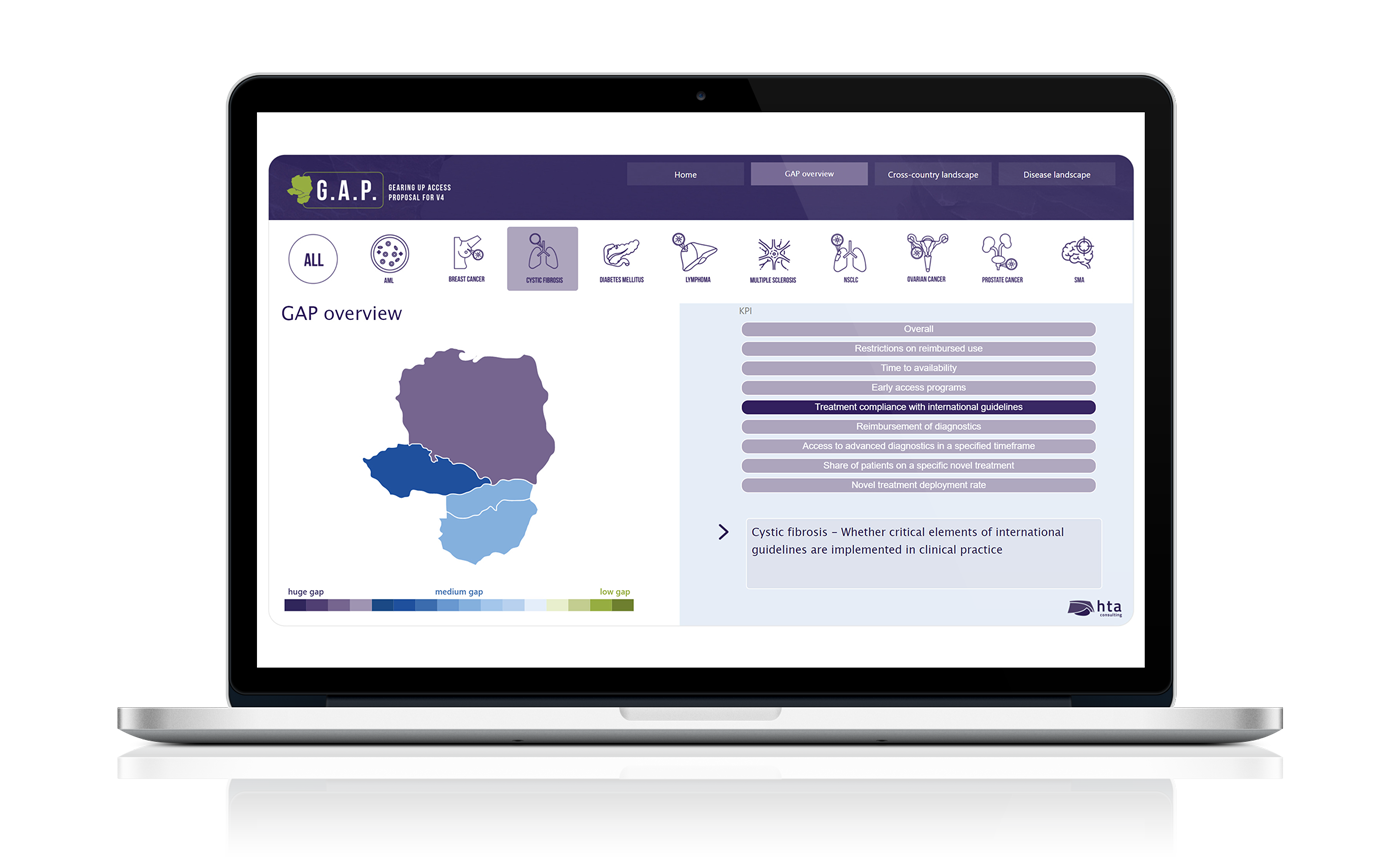GAP Data
Interactive data presentation of GAP assessment in V4 - overall GAP results, 8 indicators and detailed information across 12 diseases.
Overall
Report for specialists
PowerBI

Summary
The GAP project shows that both increasing the number of reimbursed therapies and eliminating criteria that narrow the access is a must. Indicators are confirming that the time lag between drug registration and reimbursement shall be reduced, and access to diagnostics shall be improved in a significant manner. Challenges related to the reimbursement procedures and timely access to diagnostics are areas where joint action is needed.
The highest common GAP for V4 was identified in common diseases in comparison to oncological or rare diseases. The number of available medicines is limited, especially in Parkinson’s disease in all countries. The greatest variation between individual V4 countries was noted in rare non-oncological diseases (SMA, CF) and ovarian cancer, indicating large inequalities in access to the latest medical technologies. The time to access and available reimbursement options are uneven, particularly in diabetes mellitus.
In each of the analyzed diseases, at least major limitations in access to the latest therapeutic options as well as the rapid diagnosis were identified. On the example of these selected disease entities, it can be concluded that similar limitations exist in other diseases. This means that patients in V4 countries are not treated in the most optimal way as indicated in clinical guidelines. This contributes to suboptimal health outcomes, increased DALY burden, and increased indirect costs.
Choose disaese
Check the data
Additional materials
Maps of the gap